After writing for as long as you could remember, you might have thought you knew everything there is to know about punctuation but here we gathered a list of uncommon punctuation marks which go beyond the period, comma, and dashes.
This list includes everything from the interrobang to the question comma.
For common punctuation marks issues in your writing use the punctuation checker by GLU.
1. Interrobang
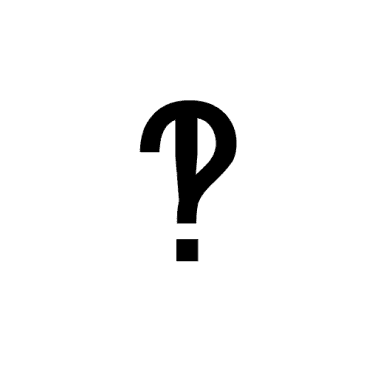
The interrobang consists of an exclamation point and a question mark. The Interrobang is used for asking a question in an excited tone or shocked tone. This means other than using an exclamation and question mark separately you can just use the interrobang for the same effect.
Did you watch the news yesterday!?
Did you watch the news yesterday ‽
The Unicode for the Interrobang is U+203D
2. Asterism
Named after the astronomical term used for a group of stars, in typography, asterism is a glyph or symbol consisting of 3 asterisks (*) in a triangular form which is used to indicate line breaks in the text. According to Keith Houston, the asterism was used to “indicate a note of considerable length, which has no reference.”
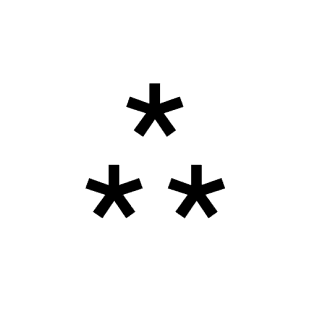
For example, if we discover a book called, “the boy who grew old” with no known author we might caption it as, *** The boy who grew old.
The asterism is obsolete and is very difficult to find in any font today as many writers prefer to use line breaks, sub-headings, dots, lines, and spaces to indicate breaks in long walls of text.
The Unicode for the Asterism mark is U+2042
3. Dagger
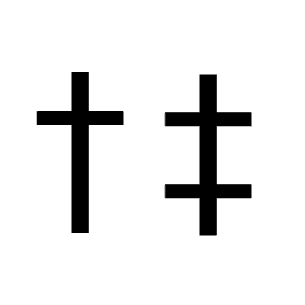
The dagger is also called an obelisk, and its variation, the double dagger, represents a javelin and is used to point out cutting extra, unnecessary, and repeated text. However, nowadays it is used mostly as a footnote.
The Unicode for the Dagger is U+2020
The Unicode for the Double Dagger is U+2021
4. Hedera

The hedera or fleuron is an ivy leaf with vine-like swirls and can be used vertically or horizontally. It was primarily used to break up long walls of text into paragraphs but quickly became a mark for pure ornamentation and was used to decorate the paper.
The Unicode for the hedera mark is U+2766
5. Caret
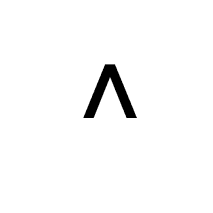
The caret is Latin for “it lacks” and accurately describes its function as the caret is used in proofreading to indicate something missing in a text.
Can you tell me where ^ library is?
Here the caret is indicating something is missing after where which, in this case, is the.
Can you tell me where the library is?
The caret is usually used in handwriting using pen and paper to add something after you had forgotten it
The Unicode for the caret is U+2038
6. Pilcrow
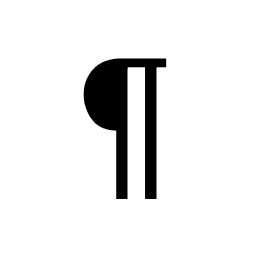
The pilcrow, also called the paragraph mark, paraph, or blind p is an inverted “P” written before the text used to mark the start of a new paragraph.
The Unicode for the pilcrow mark is U+00B6
7. Because Point
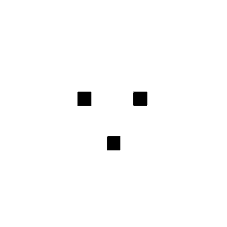
The “because point” can be used to provide further information after a line of text. It is written just like the “therefore” sign but is upside down and means “because.”
The Unicode for the “because point” is U+2235
8. Section

The section sign, also known as silcrow or double s, is a symbol used to indicate sections in a document and is mostly used by lawyers to cite legal code such as sections of the United States Code (U.S.C.)
For example, “16 U.S.C. § 580p” means “Title 16 of the United States Code, section 580p”
When two-section signs are written together they form the plural meaning of the word, “Sections.”
For example, “Open your book and read §§ 15 – 19” means “Open your books and read sections 15 to 19.”
The Unicode for the section mark is U+00A7
9. Percontation Point
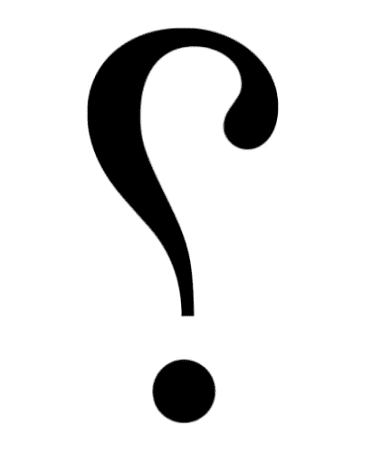
The percontation point is a reversed question mark (?) which is used at the end of a rhetorical question – a question that does not require any answer. It was first introduced by Henry Denham in the 1580s but its use declined in the 17th century as people stopped using it.
Do you really think I’d fall for that
However, it is still used in some foreign languages such as Arabic and Urdu but not with its original meaning and rather as an actual question mark.
The Unicode for the percontation point is U+2E2E
10. Acclamation Point
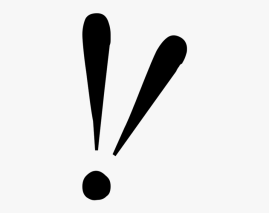
The Acclamation point proposed by Herve Bazin is used at the end of the sentence as a symbol of goodwill or welcome
I’m so happy to meet you again (Acclamation Point.)
The acclamation point doesn’t have a specific Unicode that can be typed in and sometimes is written as a double exclamation point (!!), however, you might be able to find it in some font if you look hard enough.
11. Authority Point

The Authority point was one of Bazin’s final proposals, though it failed to attract any attention, like the rest of his proposed marks. The authority point was used in sentences to show the writer’s expertise or to indicate when the advice should be taken seriously.
The $20 million investment will be vital for the business (Authority point.)
Like the acclamation point, the authority point is basically extinct and is really hard to find nowadays.
12. Doubt Point

The doubt point is placed at the end of the sentence to express skepticism when you are suspicious of the statement.
The doubt point can be used instead of the three question marks writers most commonly put at the end of their sentences when indicating doubt.
We’re going to the mall???
We’re going to the mall (doubt point)
13. Love Point

The love point is used at the end of a sentence and is intended to show love and affection. The mark consists of 2 exclamation marks mirrored and reaching a point at the end. It was also created by Bazin but as people got more tech-savvy the mark got easily replaced by the text heart, <3 and later, due to the introduction of emojis, got replaced by the “face with heart eyes” emoji.
“Let’s go out for a romantic dinner tonight (love point.)”
However, the statement doesn’t necessarily have to be romantic and can be used as just a warm sign of affection
“Of course I can take you to the park (love point.)”
14. Snark Mark

The snark mark is also called the sarcasm mark, is used at the end of a sentence to indicate that the text shouldn’t be taken literally and is sarcastic. The idea came to be after noting that there was no way to indicate sarcasm in a text as it was verbally.
However, many people did not like the idea of the snark mark as they thought it removes the fun in reading as it tells the audience that it is a sarcastic sentence rather than letting them figure it out.
Most writers nowadays prefer using quotes, exaggerations, italics, and expressions to indicate sarcasm, this can be replaced with the snark mark.
I thought you were a “strong” man who could “easily” lift weights.
I thought you were a strong man who could easily lift weights .~
You don’t need a unique font or Unicode to type in the snark mark as it is just a period followed by a tilde (.~)
15. The Exclamation and Question comma
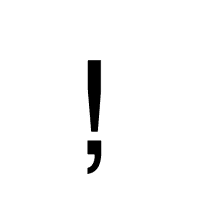

The exclamation comma is an exclamation mark but other than the point beneath it there is a comma and the question comma is a question mark combined with a comma.
To check if you may have mistakenly used a mark for commas and comma splices use the GLU too.
These marks are used when a person wants to ask a question or show excitement but continues with his/her statement.
Do you think this is okay (question comma) should I change it?
I can’t believe you lied to me (exclamation comma) I’ll never forgive you!
To conclude, it’s always intriguing to know about uncommon punctuation marks to see whether or not they can be implemented in your writing and convey your message better. The origins of these marks also give us an idea of creativity and innovation amongst the Latin and Greek texts.
Who knows, maybe you would one day make a mark that might get popular and be used by the top writers because of its convenience?
Pingback: 10 Japanese Punctuation Marks You Should Know! - Grammarlookup
Pingback: “Punctuation Save Lives! 19 Memes You Should See!” - Grammarlookup